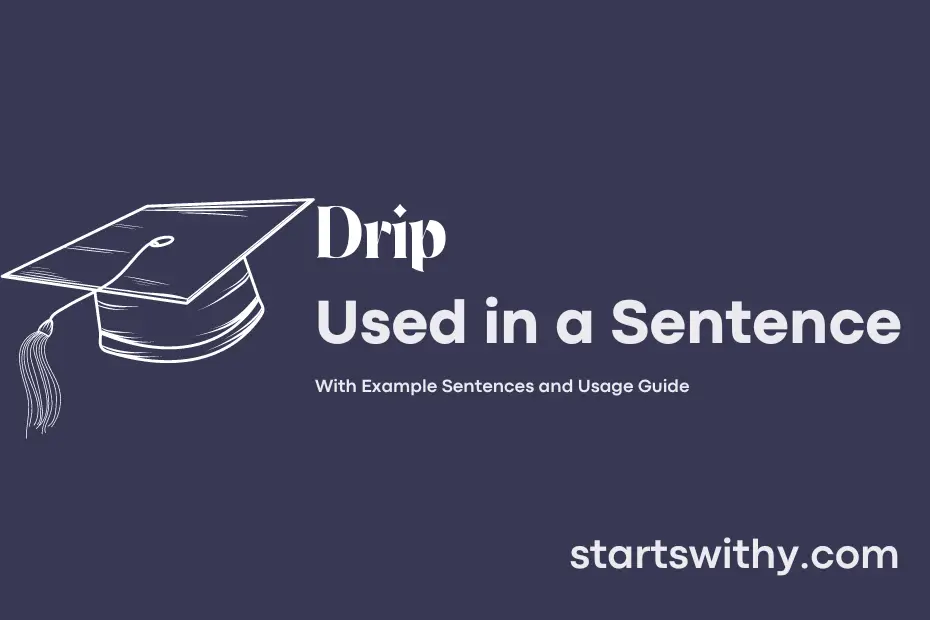Have you ever wondered what the word “drip” really means? In simplest terms, “drip” refers to the slow and steady falling of liquid in small drops.
In writing, a sentence with “drip” can be used to describe the sound of water leaking from a faucet, or to illustrate a sense of gradual movement or action. This versatile word can paint vivid imagery in various contexts, adding texture and depth to your descriptions.
7 Examples Of Drip Used In a Sentence For Kids
- Water can drip from a leaky tap.
- The rain made a drip sound on the roof.
- I saw a drip of paint on the floor.
- The ice cream started to drip in the sun.
- I heard the drip of water in the bathroom.
- The candle made a drip on the table.
- Be careful not to drip water on the floor.
14 Sentences with Drip Examples
- Drip by drip, the coffee slowly filled up the mug.
- The rainy weather caused the drip from the roof to be incessant.
- As the shower faucet leaked, a steady drip echoed in the bathroom.
- The AC in the classroom was causing a drip of water to fall on the students’ desks.
- While walking to class, a drip of sweat rolled down his forehead.
- The cafeteria served a refreshing drip of cold lemonade on a hot day.
- An unexpected drip from the ceiling interrupted the students’ study session.
- The leaky water bottle left a small drip on the table during the lecture.
- He couldn’t concentrate on his assignment with the constant drip coming from the tap.
- The sound of a drip from the kitchen sink kept her awake all night.
- The excitement of the upcoming college festival made her adrenaline drip.
- The student nervously watched as the ink cartridge started to drip on their exam paper.
- After a long day of classes, all he wanted was to lay down and let the music drip into his ears.
- The anticipation of the exam results made her feel a drip of anxiety down her spine.
How To Use Drip in Sentences?
Drip is a common verb that means to fall in drops or to let a liquid fall in drops. It is often used when describing the action of water or another liquid slowly falling or trickling in a continuous manner.
When using drip in a sentence, it is important to follow a few simple rules. First, identify the subject performing the action of dripping, such as “The faucet” or “The rain.” Next, use the verb “drip” in its appropriate form based on the subject and tense of the sentence. For example, “The faucet dripped” or “The rain is dripping.”
To enhance your sentence, consider adding adverbs or adjectives to provide more detail about the drip. For instance, you could say “The faucet dripped steadily” or “The rain is gently dripping.”
It is essential to place drip in the correct context within your sentence to ensure clear communication. Make sure the sentence is structured logically and that the subject and action are clearly defined. Avoid using drip in a way that may cause confusion or ambiguity.
By following these simple guidelines, you can effectively incorporate drip into your writing and communication while conveying your intended meaning clearly and precisely.
Conclusion
In summary, examples of sentences with the keyword “drip” showcased the word’s versatility in various contexts. From discussing a leaking faucet to describing slow, steady movements, “drip” can be used to convey both literal and metaphorical meanings. Whether used in scientific terms or in artistic descriptions, “drip” offers a vivid image that can easily be visualized by the reader.
Overall, the examples demonstrated how “drip” can enhance the clarity and impact of a sentence by providing a tangible image or highlighting a gradual process. With its flexibility and ability to evoke sensory experiences, “drip” is a versatile word that adds depth and detail to written communication.



